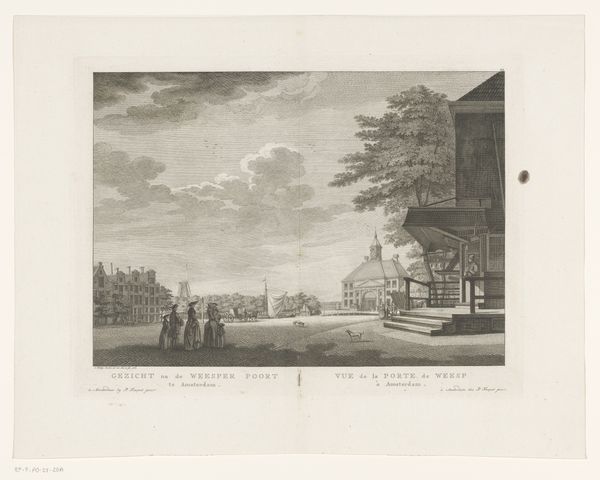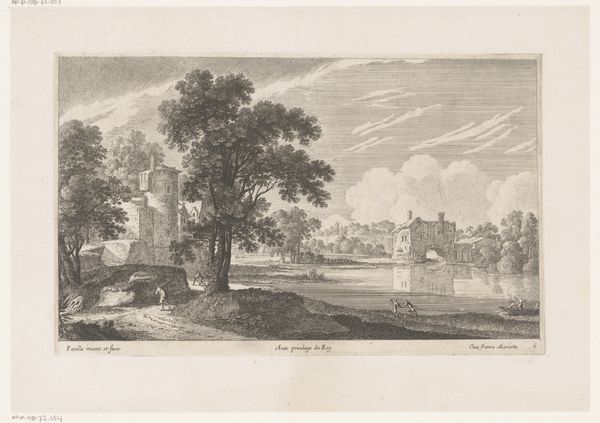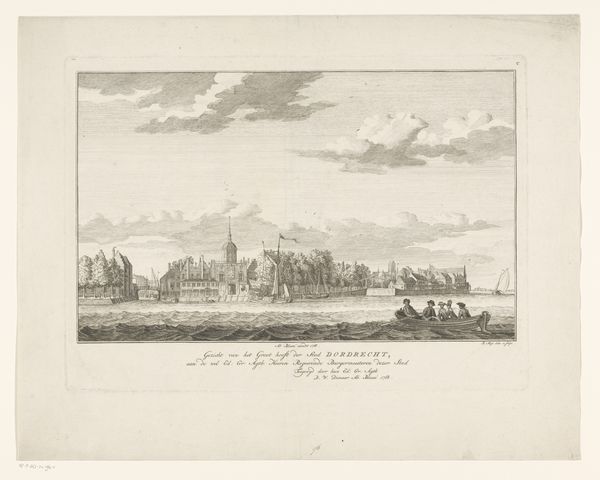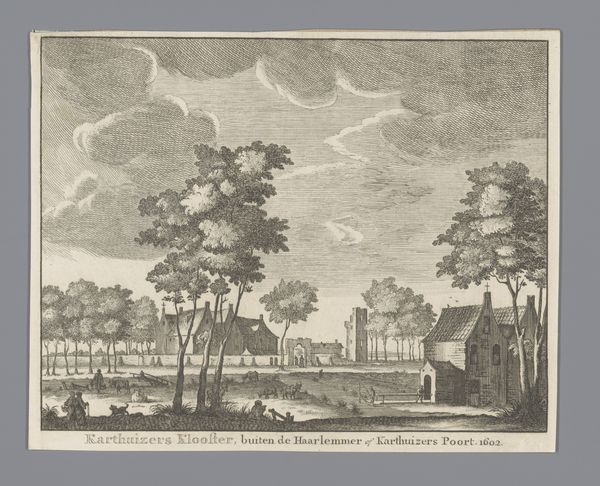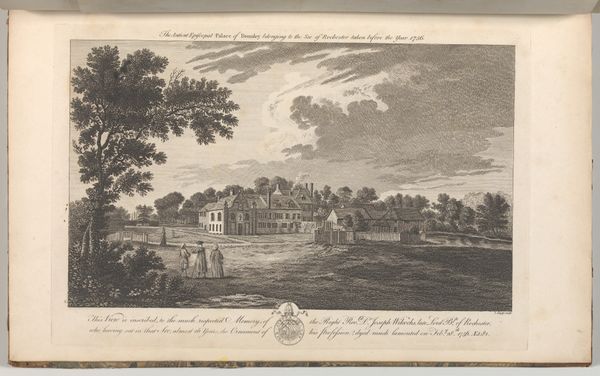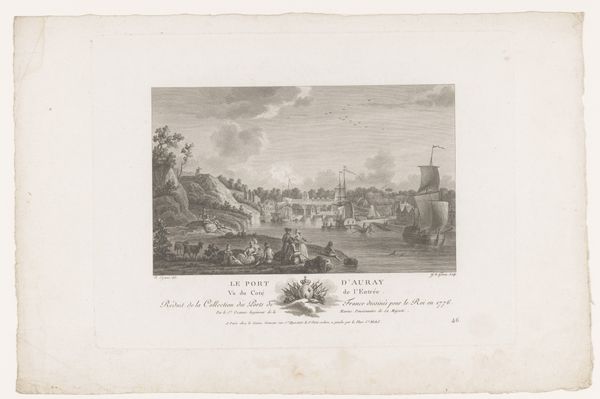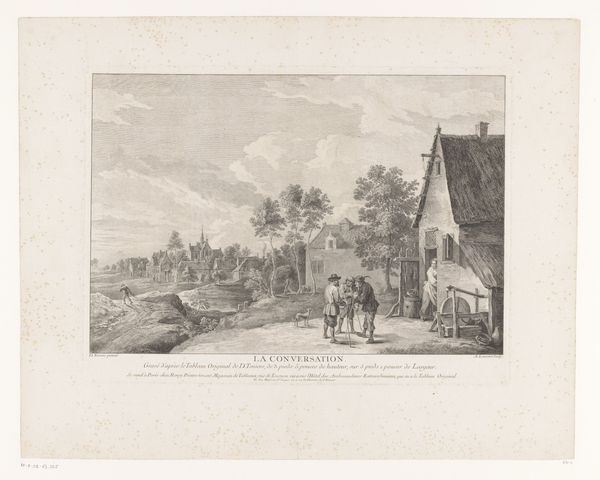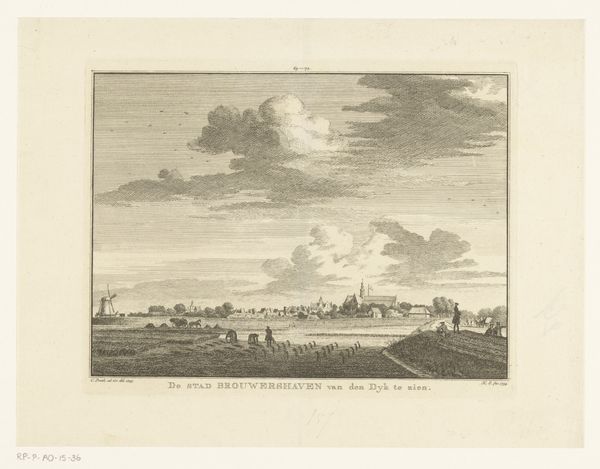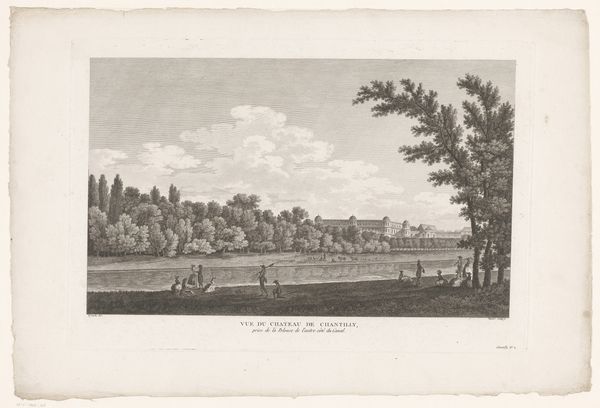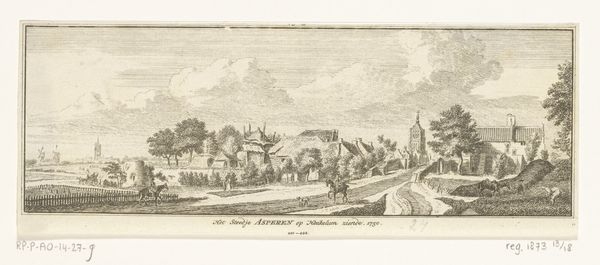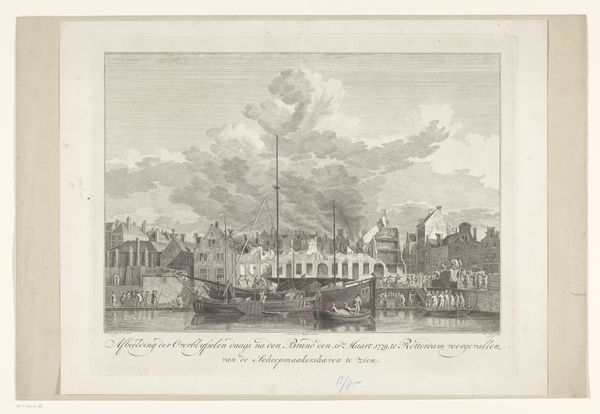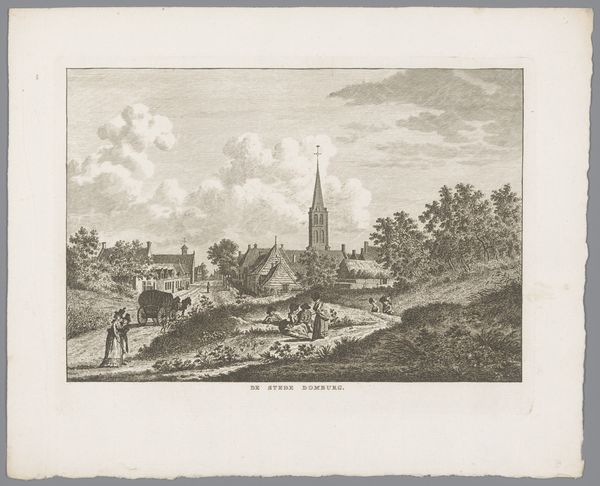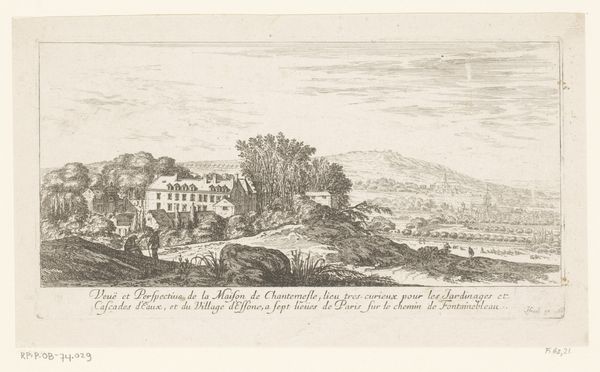
Dimensions: height 425 mm, width 550 mm
Copyright: Rijks Museum: Open Domain
Curator: This print from 1791, entitled "Aanval op Amstelveen, 1 oktober 1787," depicts a historical attack on the town. Cornelis Brouwer made it, using the engraving method. What are your initial thoughts? Editor: It’s a stark depiction. There’s an immediate sense of disruption and unease generated by the billowing smoke and organized violence portrayed. You feel how this attack altered people’s everyday existence. Curator: Let’s consider the materiality of the piece. Brouwer chose engraving, which is an accessible means of disseminating information about this event. Think of the social context: Prints like these played a vital role in shaping public perception and perhaps solidifying certain political agendas around the depicted event. How do you interpret that? Editor: Absolutely, we can read this within the turbulent context of late 18th-century Dutch politics. The print portrays the military suppression of the Patriot movement by Prussian troops restoring the power of the Stadtholder. So, in essence, it becomes a form of propaganda, aimed at influencing public opinion post-event. Curator: Yes, examining the image in light of Dutch political struggles also compels me to look closely at who produced it, where it was circulating, and how. I mean, think about access; the choice of an easily reproducible format like engraving speaks volumes about reaching a broad audience. What class was being appealed to with these illustrations? How would the meaning of this vary across different societal groups in Amstelveen? Editor: And more broadly, let’s also not forget the human cost of this event, which often goes overlooked. Think of gender, race, class… the vulnerability of the disenfranchised in the face of political and military action needs also to be acknowledged, and prints like this risk simplifying and erasing complex lived realities on the ground. Curator: Those complex layers and your observation that these get "erased" is essential. It gives pause to a too straightforward read of this engraving. Thinking about who owned or handled such images allows us to reflect more on power and representation dynamics during the period of production. Editor: Exactly. Understanding these nuances and contextual factors gives us a richer, more complicated, more *accurate* perspective of the past. Curator: Absolutely. Considering the modes of its making allows for multiple histories to emerge, connecting a material artifact to social practices of consumption and seeing. Editor: And reflecting critically helps make this history present to us and, dare I say, hopefully informs future action for a more just world.
Comments
No comments
Be the first to comment and join the conversation on the ultimate creative platform.
